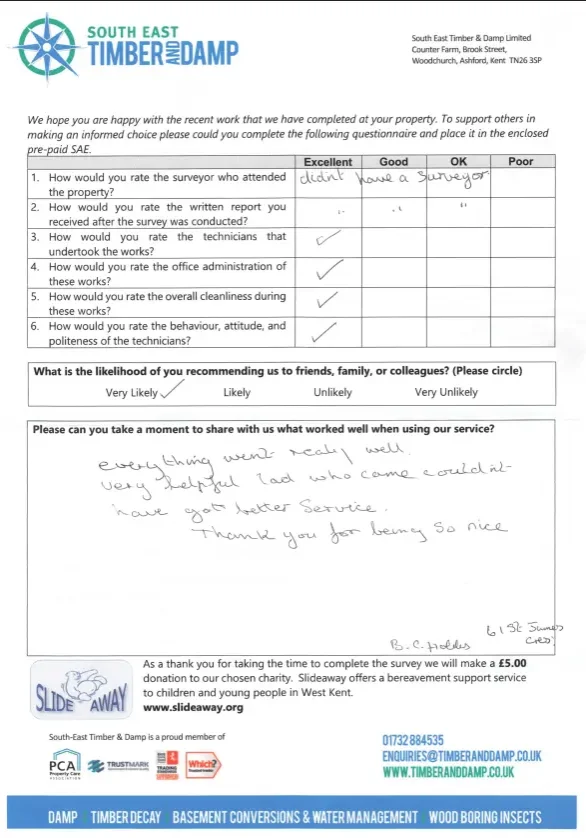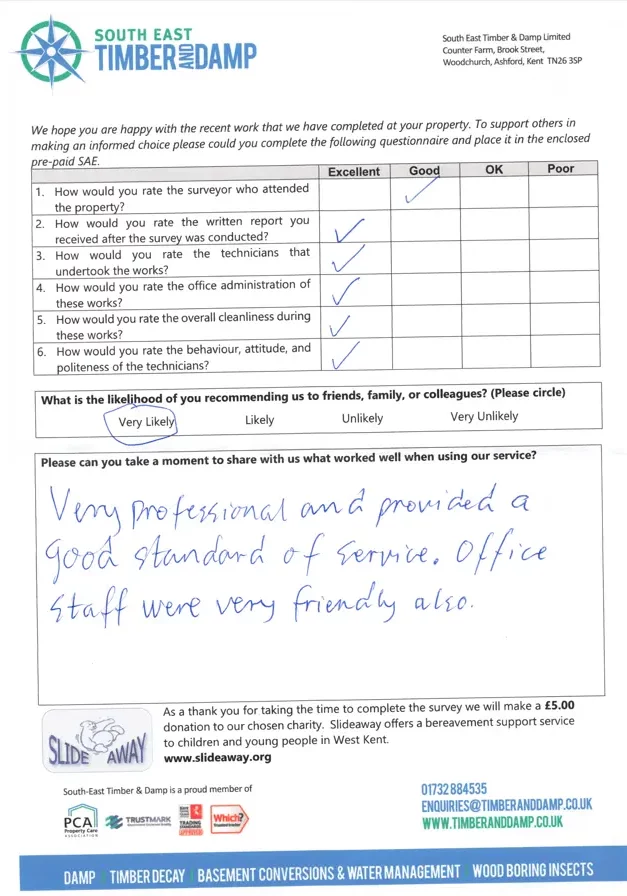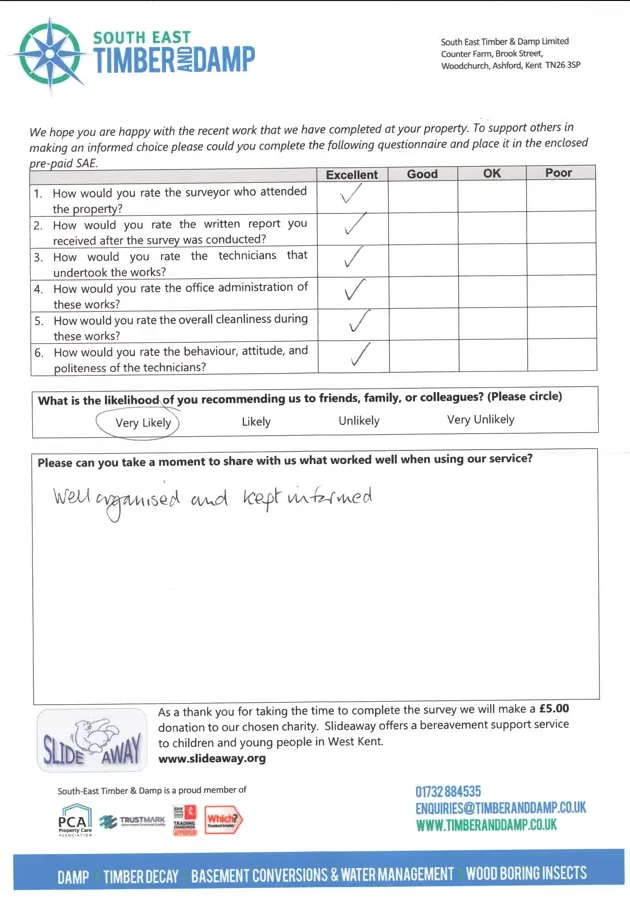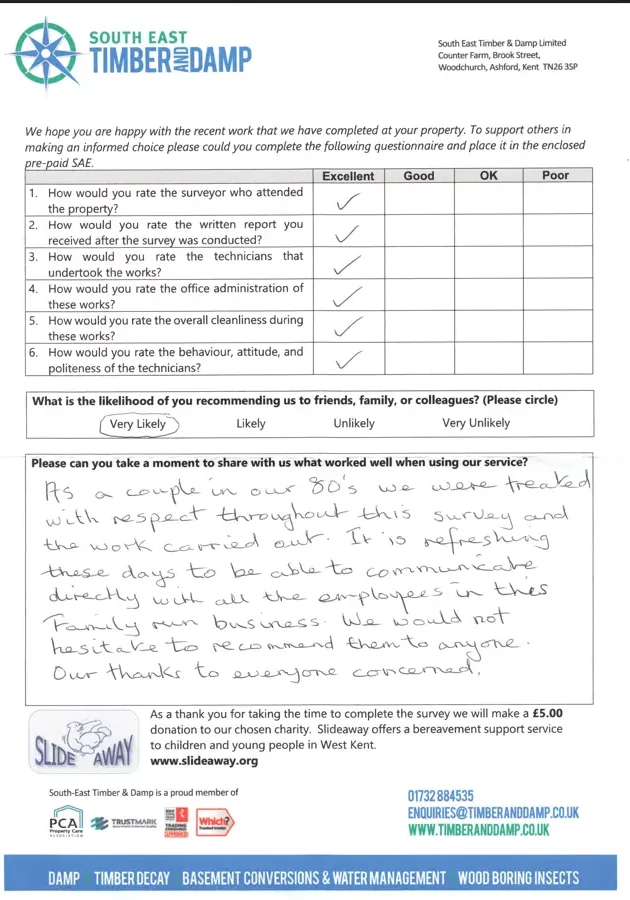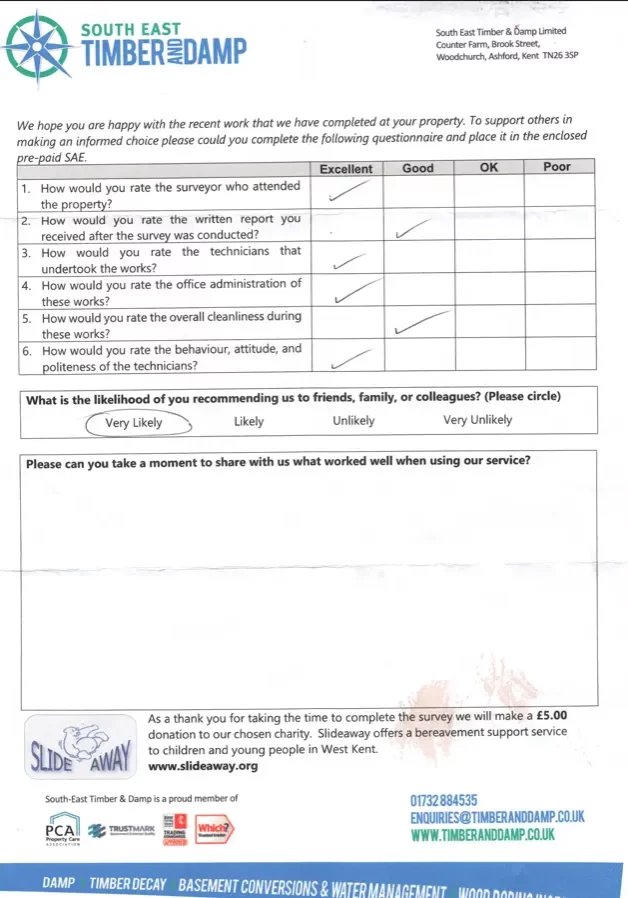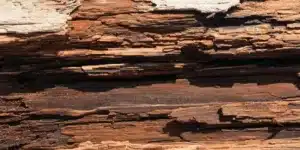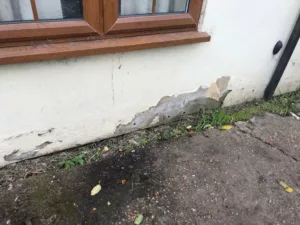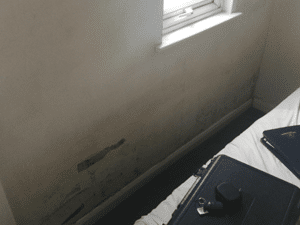Book your survey today!
Not all damp is damp.
This may sound a little straightforward, but not all damp is damp. There are many different types of damp.
What we mean is not all damp is damp that a damp specialist can assist with. Let us explain.
When you book a survey with us, our team visits to carry out an assessment of a problem. We are not quoting for work; we are providing a professional service with the best advice and the right solutions to solve the issue.
On many occasions, there is ‘no work’ for us to carry out. Very often, it is a matter of general maintenance, some lifestyle changes and occasionally drafting in the plumber to mend that leak.
So what types of damp are there?
Within older properties, there are generally three natural sources of dampness
- Rainwater enters the building often as a result of broken pipes or missing tiles known as penetrating damp
- Dampness rising up from the ground — Rising damp
- Moisture within the air known commonly as condensation
Source – Rainwater, also known as Penetrating Damp or Lateral Damp
In our wet climate, moisture can enter a building via various means. One of the common types of damp is Penetrating Damp which is the result of:
- Ineffective, broken rainwater goods
- Cracks in pointing (the concrete between the bricks)
- Cracks or damaged renders – covering over the bricks trapping moisture behind/within
- Loss of tiles, cracked tiles, roofing defects
- Flat roofing defects
- Flashings – Lead or other material flashings that have moved, cracked or become ineffective
- Chimney pots that do not have “caps” allow moisture to run down the inside into the building
- Gable end walls that are north facing take the brunt of bad weather – moisture being absorbed by the brickwork and making its way into the building.
What our customers say
Source - Water from the ground known as Rising Damp
This term is referred to as “Rising Damp” it is characterised by a descending moisture gradient within a wall from a floor level that can go up as far as 5ft or 1.5meters in height.
This moisture problem is usually associated with salt issues. Generally salts within the ground water known as nitrates, sulphates, chlorides move to the surface of the wall causing salt deposits and spoiling to the internal fabric.
Lateral Damp – Ground water can also migrate into a building horizontally. This is when the internal floor level is below the external ground level therefore “below ground” with an earth retaining wall (even a high flower bed can cause this) moisture from the ground penetrates laterally into the walls causing dampness.
Source - Moisture within the air known as Condensation
We regularly see condensation on cold surfaces such as windows where warm air containing moisture comes into contact with a cold surface and condenses in the built environment. This condensation can then form mould on the cold surface and in the event of moisture being trapped between furniture and cold walls can cause mould.
Condensation can form on ceilings and upon investigation it is very often due to a cold spot, either caused by a lack of insulation or a leak creating a cold spot, attracting moisture.
If you can identify the source of the moisture that is causing you an issue, then you can identify what damp treatment is required to remedy it. Some are lifestyle changes, some are simple maintenance and on occasion, specialist assistance is required.
If you need assistance with any damp issues within a building our fully trained surveyors will attend and do the thorough assessment required to determine what the cause is, how to resolve this and the best damp treatment required to remove the issue.
Our Latest Case Studies
Frequently Asked Questions
Identifying the type of damp involves looking for specific signs:
- Penetrating Damp: Check for damp patches on walls and ceilings, especially after rain. Look for water stains, peeling wallpaper, and bubbling paint.
- Rising Damp: Look for damp patches along the lower parts of walls, salt deposits (efflorescence) on walls, and a musty smell in basements or ground floors.
- Condensation: Notice dampness on windows, walls, and ceilings, as well as mold growth in corners and around windows. This is often accompanied by high humidity levels inside the property.
In short – No! We value our experienced surveyors Dean and Lee’s time and can give you the best advice. We charge a small fee to cover some of the costs as many times, some straightforward maintenance advice will remedy the issue without any work by us required.
We have a range of survey fees from £95 to £295 to carry out a timber and damp inspection. Many clients have said that a thorough, honest investigation into their damp and timber problem put their minds entirely at rest and saved them money.
The video below explains why we charge for surveys:
This is subject to the area to be surveyed. We would say the minimum time, if it is in an isolated area in a small house, could be 40 minutes. However, if the property is substantially larger and requires both a timber and damp inspection, this could mean 2 hours plus.
The surveyor will do both external and internal inspections of the property and accessible areas. Obstructions, furniture, boxes, panelling, and floorboards will not be moved. It is for the property owner to move these obstructions to allow the inspection.
If remedial works have been carried out, then – YES. However, check your written report to ascertain the length and type of guarantee and any exclusions or maintenance requirements.
Our guarantees are up to 10 years long.
We KNOW there are 20 and 30-year guarantees; however, our insurance company limits us to offer realistic guarantees. REMEMBER, a guarantee is WORTHLESS if the company has closed down!
We offer the ability to purchase a GPI insurance policy for a one-time fee to run alongside our guarantee. See our dedicated page on GUARANTEES to find out more.

Need help? Book a survey at a time to suit your schedule
Our mission is to give you the peace of mind you deserve when it comes to waterproofing your house or business. Commission a survey from our team to assess your situation professionally.

